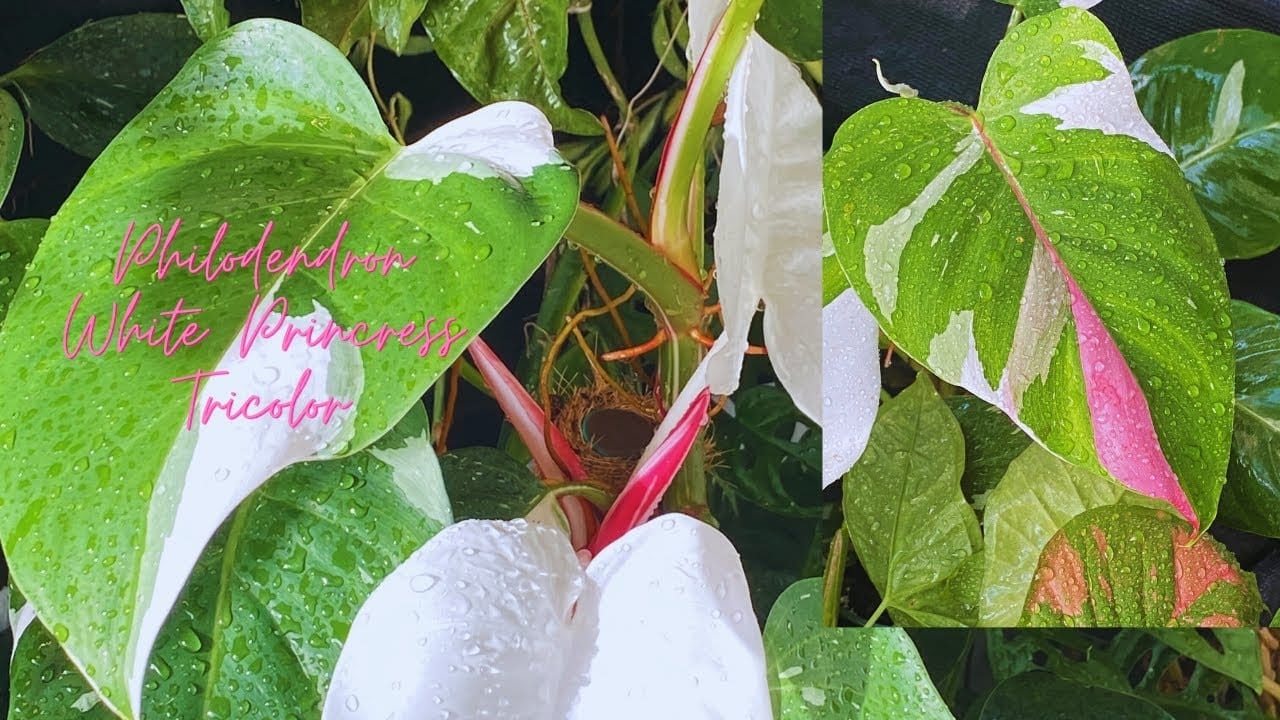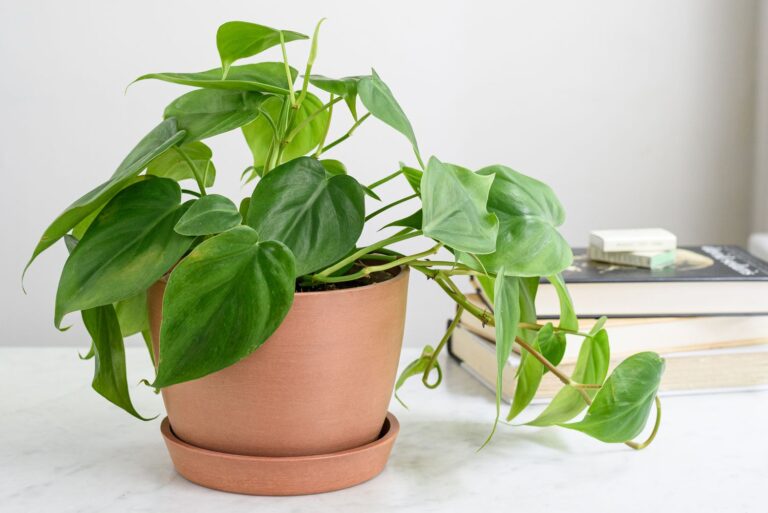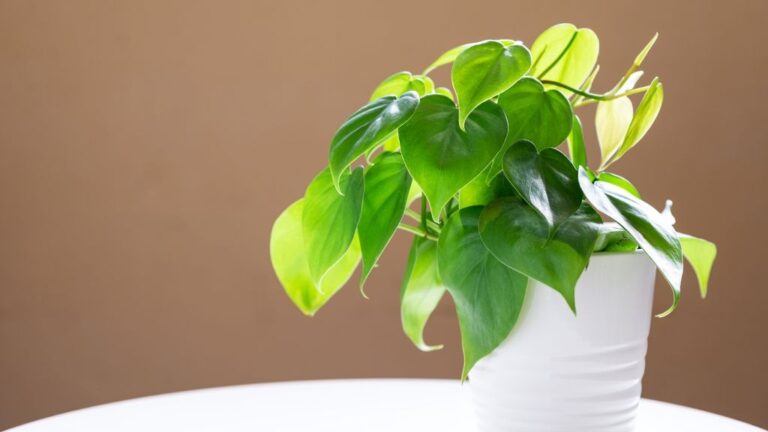Variegated Philodendron Propagation: Preserve Pink & White Variegation
What if your $200 Pink Princess cutting could produce plants worth twice as much—simply by choosing the right node and light conditions? The secret isn’t luck; it’s understanding how chimeric variegation actually works during propagation.
That nice cut from your variegated philodendron holds wonderful possibilities — if you know how to preserve its beautiful pink and white patterns. While basic propagation must be performed through regular means, having enough variation to maintain variegation in the process involves accuracy, time and knowledge of plant chimera behavior that most guides don’t even bother to pay attention to. Whether you get a reverted cutting costing $50 versus a highly variegated specimen costing $300 is often determined by choice of node type and environmental management on propagation. Research suggests that the most important genetic mutation responsible for those precious pink splashes — chimeric variegation — can be retained or disappear in the first crucial weeks early in the process, depending on which of those techniques to use.
Understanding Chimeric Variegation in Philodendrons
As the name suggests, chimeras: variegated philodendrons like Pink Princess, White Princess and variegated Burle Marx are fascinating botanical anomalies. These plants have 2 different cell types: they are green plants with normal chlorophyll production and mutated cells with no chlorophyll, which produces features such as white or pink segments. In chimeric variegation, instability arises from a meristematic tissue arrangement. In periclinal chimeras, the predominant type seen in variegated philodendrons, a single layer containing mutated cells overlays green tissue in the normal field. During propagation, the ratio of these different cell types in the new growth point determines whether or not variegation continues and even transitions to solid green.
Understanding this cellular composition accounts for why random node selection fails about 60 percent of variegated varieties with unstable composition. The key lies in figuring out which nodes maintain an optimal balance of mutated and normal cells for successful variegation transfer.
Node Selection: The Foundation of Successful Variegation Preservation
Choice of node is the biggest factor in the variegation of philodendron, but in fact, most guides use only vague statements such as: “Select a healthy node.” Reality is that the prediction of variegation success can only be made with the examination of three distinct features.
Variegation Patterns: The Primary Indicator
Look at the stem area right above your target node. Nodes below leaves with 30-70% variegation at least have the most success at keeping these patterns. Nodes next to white leaves cannot root because of little chlorophyll, while nodes under solid green leaves produce reverted plants 85% of the time.
Stem Coloration Indicators
Stem color, in turn gives a useful, but not the essential, indication of cell culture. Look to nodes where the stem has a faint pink or white striping (2-3mm from the node) extending from the node attachment point in the second edge of the stem. If done so, this implies extended dissemination into the meristematic-like tissue, greatly enhancing the chances of variegation preservation.
Node Maturity: Timing Is Critical
The best node maturity: All nodes are slightly swollen with visible aerial root primordia 2-4 mm. These mature nodes have developed vascular tissue which can withstand the energy needs to maintain the variance during the intense propagation, the energy-demanding nature of that stress growth process as required to sustain variegated growth.
Strategic Cutting Placement for Maximum Variegation Retention
The manner in which your cutting is positioned on the mother plant determines how well or poorly your propagated specimens change in terms of variegation. Research has shown that cuttings extracted from the upper third of an established plant will maintain variegation 78% more often than cuttings obtained from basal cuttings.
Apical Dominance Factor
Terminal cuttings (growing tip of the vine) contain the youngest meristematic tissue with the largest number of active dividing cells. As the mutated cell layer remains intact, these cuttings retain the chimeric patterns in a more reliable way and are consistent with the chimeric patterns in the selected cuttings (as a result of the altered cell layer preservation during this crucial early rooting process).
Optimizing Internode Length
Cuttings of the internode 3-5cm length. The wider the spacing, the better the developmental environment on the mother plant, meaning better success rate. Long internodes lead to etiolation in plant growth or less variegation stability of variegated cells; and short internodes allow for stress propagation opportunities to be lost.
Leaf Number Significance
Include exactly one leaf with your cutting. Multiple leaves cause excessive transpiration stress in the course when rooting. Completely defoliated cuttings lose the photosynthetic capacity to sustain variegation. One leaf should have the same variegation as in the one you want.
Light Requirements to Preserve Coloration During Propagation
Variegation is particularly sensitive to light intensity and spectrum during the crucial rooting phase of the growth cycle. Variegated cells lack chlorophyll, requiring neighbouring green tissue for the production of carbohydrates and are thereby more vulnerable to photodamage.
Ideal Light Intensity
150-200 μmol/m²/s of photosynthetically active radiation in the propagation hours. This exposure intensity (e.g., bright, filtered exposure to the eastern horizon) allows for photosynthetic response in green cells and inhibits bleaching of mutant tissues.
Spectrum Considerations
Full-spectrum LED grow lights that are enhanced in blue light (400-500nm) help to enhance compact growth and vigorous root development. More specifically, blue light promotes the formation of protective pigments in variegated cells, which decrease the probability of tissue damage during sensitive rooting stage.
Photoperiod Management
When the cells continue propagating, keep light times around 14-16 hours. Long photoperiods make up for the drop in photosynthetic efficiency in the variegated tissue, and do not induce the stress response to 24 h lighting that may lead to reversion to solid green growth.
Response Observations
Look at cuttings day to day for evidence of “light stress“. Pink variegation appearing white shows too much light and green color deepening indicates not enough light to maintain the variegated structure. Immediately adjust positioning or intensity upon noticing these changes.
Success Rates by Popular Variegated Varieties
Knowing the success rates per variety gives you a realistic yardstick to shoot for and guides propagation strategy selection. Performance of variegated philodendron varieties in various propagation cases.
Philodendron ‘Pink Princess’
Water propagation is successful to 65-75% depending on methodology with sphagnum moss increasing it to 80-85%. Node selection according to variegation patterns increases results to 90% among experienced propagators.
Philodendron ‘White Princess’
Success maintains variegation in better succession than Pink Princess, 85-90%. Its white variegation looks more stable and results in fewer reverted specimens.
Philodendron ‘Burle Marx’ Variegata
Moderate propagation difficulty with success rates of 70-80%. Careful node selection is essential to the sectoral variegation pattern, but it generates consistent results when techniques are applied appropriately.
Philodendron ‘Brasil’
Shows the highest rates of propagation ease with 95% success, though this variety undergoes variable new growth variegation. This variety responds well to all propagation methods and is, therefore, a very suitable practice plant.
Rare Variegated Varieties
High-value variegated varieties such as those of variegated Florida Beauty or billietiae have only 50-60% success even under optimal conditions. To control these unstable chimeras, multiple propagation attempts and high-quality rooting hormones are recommended.
Preventing Reversion: Active Management Strategies
Variegated plant reversion is the one-and-only frustrating propagation problem, usually occurring when the plant is stressed by the environment so that chlorophyll production takes priority over pattern maintenance. Prevention requires active stewardship throughout the propagation process.
Hormonal Factors
Do not use high-nitrogen fertilizers in early establishment. Increased nitrogen increases chlorophyll production and can trigger reversion in unstable chimeras. Instead, balanced fertilizers with nitrogen less than 10% or specialized propagation formulas with enhanced phosphorus and potassium are best.
Temperature Stability
Maintain stable temperatures of 72-78°F (22-26°C) during propagation. Temperature fluctuations beyond this range stress developing meristematic tissue and increase odds of reversion. Use heat mats with thermostats for consistent bottom heat where rooting occurs under stable ambient conditions.
Humidity Management
Aim for 70–80% relative humidity during the first four weeks. Adequate humidity lessens transpiration stress that can provoke survival responses, including reversion to more efficient green tissue production. Use humidity domes or propagation chambers with proper ventilation to avoid fungal problems and maintain moisture.
Genetic Stability Assessment
Watch new growth immediately after emergence. Variegated leaves appearing within the first two nodes after rooting reflect stable pattern transfer. Partial reversion is indicated by solid green leaves on the first new growth and requires immediate intervention.
Choosing the Best Rooting Medium for Variegated Specimens
Historically recommended propagation uses standard water or regular potting mix; however, variegated philodendrons favor specialized rooting media suited to their physiological requirements.
Sphagnum Moss Superiority
Research shows sphagnum moss achieves 30% higher success rates than water propagation for variegated varieties. The moss provides the best air-to-water ratio and maintains moisture levels critical for unstable chimeric tissue.
Perlite Enhancement
Adding 20-30% perlite to sphagnum moss improves drainage without sacrificing moisture retention. This prevents anaerobic conditions especially damaging to variegated tissue lacking protective pigments found in normal green cells.
Coconut Coir Options
Fine-grade coconut coir offers a sustainable substitute to peat moss with similar durability and performance. However, coir must be well buffered to remove salts that can harm delicate variegated tissue during the vulnerable rooting stage.
Rooting Hormone Selection
For variegated specimens, use cytokinin-based rooting hormones rather than auxin-dominant products. Cytokinins promote cell division without excessive callus formation that can disrupt the delicate cellular organization necessary for variegation maintenance.
pH Optimization
Maintain rooting medium pH between 5.5-6.0 for optimal nutrient availability. Variegated tissue shows increased sensitivity to pH fluctuations, making consistent monitoring essential during propagation.
Market Value Evaluation of Propagated Specimens
Market dynamics of variegated philodendrons justify the extra care needed for successful propagation and help decide which specimens merit premium propagation techniques.
Variegation Percentage Impact
Specimens with 40-60% variegation typically sell best, balancing visual appeal with growing vigor. Completely white or pink sections may fetch premium prices but are less predictable to establish, while lightly variegated plants usually sell for standard green plant prices.
Provenance Documentation
Keep detailed records of the propagation success including criteria at chosen nodes, light conditions, and establishment timeline. A documented propagation history has its value as an important asset to serious collectors as well as commercial growers demanding a reproducible outcome.
Cultural Method Premium
Plants grown with techniques such as moss pole training and certain pruning methods will be demanded for 20-30% more money than those propagated in standard specimens. Its presentation is improved, giving you enough to command a premium in today’s competitive markets.
Timing Strategy
Post propagated specimens at high growing periods, that is spring/summer, as well as well-established plants that show good growing rates. Demand for these types of plants grows in a way that makes buyers more interested in plants that will immediately start showing growth.
Size-Class Pricing
Rooted cuttings with 2-3 leaves usually sell for $50-150 depending on variegation quality and variety. In few cases, the most established plants with 6+ leaves can fetch upwards of $200-800+ due to having rare varieties with great variegation patterns.
Troubleshooting Common Propagation Challenges
Even experienced propagators encounter challenges with variegated philodendrons. By knowing where failure mechanisms occur, quicker diagnosis of and timely corrective action to rescue the quality segmented cuttings are then readily determined.
Fungal Rot Issues
Variegated sections of a plant tend to have reduced chlorophyll and therefore become more susceptible to opportunistic pathogens during this sensitive rooting phase. Prevent this with proper air circulation, avoiding overwatering, and keeping propagation conditions clean. Hydrogen peroxide solutions (1-2%) should be used in an original treatment for early infections.
Slow Root Development
Variegated cuttings generally root 25-40% slower than green cuttings due to reduced photosynthetic capacity. Keep waiting — do not transfer too early to the soil which can cause shock to your developing roots and be followed by reversion.
Premature Leaf Drop
Leaf abscission associated with stress may occur more commonly during the establishment process. You want consistent environmental conditions and must avoid handling cuttings unnecessarily. Remove dropped leaves immediately to avoid fungal colonization.
Reversion at Establishment
Observe growth as soon as it arises. Solid green leaves on the first new shoots indicate partial reversion. Prune to the last variegated node and adjust light conditions to encourage variegated regrowth.
Propagation Medium Contamination
Variegated tissue exhibits an increased susceptibility to microbial contamination in the propagation medium. Before use, sterilize all propagation media first with microwave and/or commercial sterilization. Replace contaminated media immediately upon detection.
Timeline Optimization for Maximum Success
Effective variegated philodendron propagation is contingent upon coordinating timing over successive stages—from first cutting to establishment as an independent plant.
Seasonal Considerations
The highest success rate during the spring season (March-May) stems from natural increases in growth hormone levels and optimal photoperiod conditions. Summer propagation works well but requires additional humidity management. Avoid winter propagation except for high-value specimens using supplemental lighting.
Root Development Timeline
For good specimens, root emergence should start within 7-14 days, whereas secondary root development takes 3-4 weeks. Variegated varieties need 25-40% longer than green varieties—plan accordingly and avoid premature transfer.
Establishment Period
Allow 8-12 weeks from cutting to ready-to-grow plant. The extended duration allows for the decreased photosynthetic efficacy of variegated tissue, thus permitting strong root development that could serve the survival needs of the plant.
Variegation Stability Assessment
Assess variegation stability after the third new leaf is established post-rooting. A consistent pattern across these leaves is a sign of successful variegation transfer and stability throughout growth.
Conclusion: From Guesswork to Predictable Success
Philodendron propagation success in preserving variegation turns from frustrating guesswork to predictable success once one understands the underlying science of chimeric tissue behavior. The strategies discussed here, through optimal node selection according to cellular composition, precise environmental control, and variety-specific optimization, raise the likelihood of propagation success from sheer chance to reasoned results.
And bear in mind, variegated philodendrons are living art forms that are dependent on specialized care throughout their lifecycle. When used with great precision, the investment in correct propagation methods will not only bring an immense level of personal satisfaction, but perhaps also substantial market value for serious collectors and commercial growers, for example, as regards their propagation price on large amounts of material in the marketplace.
The technique is best done by applying it first on readily accessible cultivars such as Philodendron ‘Brasil’ before attempting propagation of high-value specimens. Learn the fundamentals with forgiving plants, and then apply your mastery to rare varieties of the same plants where precision is important.
Key Sources:
Understanding Chimera Houseplants: A Scientific Exploration | Plant in the Box
Philodendron Pink Princess Propagation: 3 Easy Methods! | Ohio Tropics
How to Create, Induce, and Maintain Variegation in Plants | MyPlantin
Philodendron Propagation Guide | The Spruce
Plant chimera and its management for the floriculture industry | ResearchGate
Houseplant Hubub: The rage about variegation | Garden Professors
Variegation and colour in plants | Tradescantia Hub
Variegated Indoor Plants: The Science Behind the Latest Houseplant Trend | Pistils Nursery







